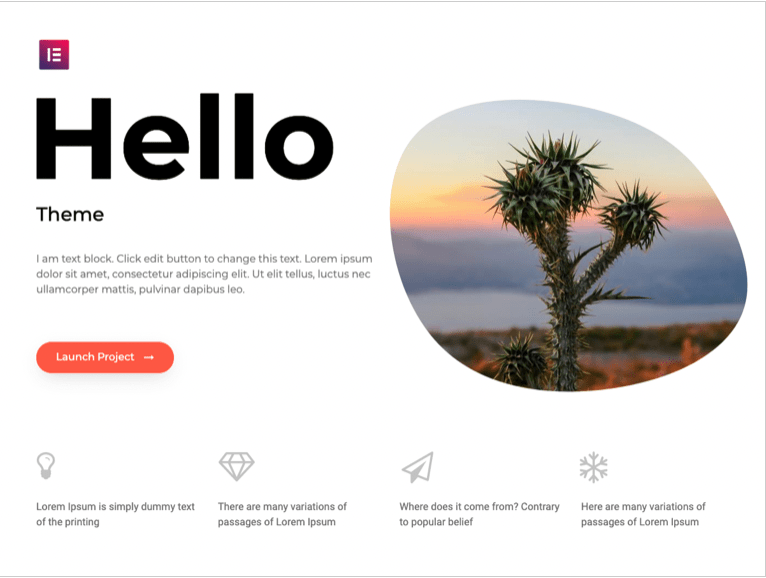How to Improve Slow WordPress Site
Introduction
How to improve slow WordPress site is surely a hot topic these days. There are numerous techniques that you can employ to get the job done. Our intent here is to list every trick we know of that can make your WordPress site a lot faster. We will share the most useful WordPress speed optimization tips to boost WordPress performance.
How to check your WordPress Site Speed?
First and foremost, you must assess your website’s current load time. Keep in mind that the speed may vary from one page to the next.
A website’s homepage is frequently used as a baseline for determining load time. The following three tools are widely used across the internet to check a website’s speed:
What Slows Down your WordPress Website?
WordPress isn’t exactly known for its quickness. To develop and deliver pages to visitors, themes, plugins, and core PHP scripts all take significant server resources. Too many items running at the same time will exhaust these resources, slow your pages down, and prevent conversions.
The most common cause for slow website are:
- Web Hosting -Shared web hosting With incorrect configuration can be a disaster.
- Theme – A poor choose of theme to start building your website is a big no no.
- Page size – Use of full size images, too many css codes on your website can cause slow loading webpages.
- Bad Plugins – Some very popular plugins can be the reason of your slow website.
How to Improve Slow WordPress Website?
1. Choose Web Hosting Wisely and Configuring
It’s best to choose Dedicated or VPS web hosting for your website but that will cost you fortune if you are a beginner. A solid shared hosting service, such as Bluehost or Siteground, will go above and beyond to optimise your website for speed.
The more you use your WordPress site, the more old and unneeded files fill up your database, slowing down your performance. As a result, cleaning your database speeds things up by deleting entries that aren’t needed. We Recommend using WP-Optimize Plugin. The best thing about WP-Optimize is it cleans database as well as it optimize your whole website by optimizing images and Minify Css and JavaScript codes.
2. Stay Up-to-date
If you’re a WordPress administrator, you’re used to updates. WordPress core, themes, and plugins all need to be updated in order for your site to work as smoothly as possible. Always use the most recent version to improve performance, keep your site safe, fix bugs, and ensure that every feature and tool works properly.
Running a Google PageSpeed test before and after installing any plugin is a smart idea. This will display the plugin’s influence on your site’s speed, allowing you to decide whether the plugin’s usefulness is worth any site slowdown.
You may also see how your present plugins effect site speed by deactivating them one at a time in the ‘Plugins’ section of your WordPress website back-end and then conducting a PageSpeed test.
Best about the WordPress site is, it automatically updates most of the Plugins and PHP versions.
3. Delete Unused Plugins & Themes
When it comes to WordPress plugins, quality trumps quantity. Too many plugins operating at once can slow down your website’s load times because each one is like a piece of mini-software. Even if you’re not utilising a plugin, it’s possible that it’s using resources and doing unneeded work in the background. It might be time to make some changes.
Start by deactivating any plugins you know you won’t use again. After each deactivation, test your site, then delete these plugins after you’re sure everything is still working. Then, one by one, deactivate the plugins to check which ones affect page performance. Look for alternatives to these plugins that aren’t as heavy.
The unused theme on your WordPress website are eating your database and keep on installing updates frequently. It’s better to delete those themes if are not in use.
4. Use Light Theme
Your active WordPress theme, like plugins, may be putting undue strain on your web server. Themes featuring a lot of high-quality pictures and effects may appear interesting, but they’re not free. Many themes are programmed inefficiently, which increases file sizes and slows page performance. Fancy effects might require a lot of code, yet many themes are programmed inefficiently.
Choose a minimal theme with only the functionality you’ll need for your pages instead. If you like, you can always add more effects later using plugins or custom CSS. We recommended Hello Elementor Theme from Elementor themes Library is a wonderful place to start.

5. Using Good low Resolution Images
The most prevalent cause of sluggish WordPress blogs is oversized pictures. The greater your website’s image assets are, the longer it will take to load. Optimizing your images is thus a critical step in increasing the speed of your website. Optimizing image files entails downsizing and compressing them so that they can be accessed and loaded faster.
There are two phases to good image optimization.
To begin, ensure that your image is edited before posting it to your website. you can you photo editing software like Photoshop or Luminar. If not you have any option to first upload your images to WordPress media and use a plugin like Smush or WP-optimizer (all in one plugin). You can use both option for an optimizing results.

6. Use Lazy Loading (If required)
Lazy loading can help your site if you have a lot of images, several video embeds, and photo galleries in your blog entries.
Lazy loading downloads only the photos and videos that will be viewable on the user’s screen, rather than downloading all of them at once. All other photos and video embeds are replaced with a placeholder image.
Your website loads graphics as the user scrolls down, which are now visible in the browser’s viewing area. Images, videos, and even WordPress comments and gravatars can be loaded slowly.
The Lazy Load by WP Rocket plugin can be used to load pictures, iframes, and videos slowly.

7. Use a CDN
Real-world distance is another common cause of poor performance. On devices that are further away from your web server’s physical location, your pages will take longer to load. This has a particularly negative impact on overseas users and people in rural areas. Fortunately, a Content Delivery Network, or CDN for short, can mitigate this effect.
On any WordPress site, CDNs are simple to set up and maintain. Your hosting provider will very certainly include a CDN service as part of your package or as a paid add-on, and your CDN will handle all content distribution for you. Cloudflare and StackPath are two popular CDNs.
What's Trending

Best Smartwatches for Men
Best SmartWatches for Men Hey, did you know that smartwatches have become super popular in recent years? These cool little gadgets have lots of cool

What are the must-have iPhone apps? Why?
What are the must-have iPhone apps? Why? Most common and useful iPhone apps When it comes to finding the must-have iPhone apps, the options can

Best Laptop for College Student 2023
Best Laptop for College Student 2023 Budget Laptop for Students Attending School Remotely and In-person As a student, a laptop is an essential tool for


